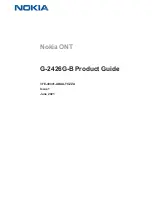
UTT Technologies Chapter 12 VPN
http://www.uttglobal.com
Page 230
subnet, please enter any IP address belonging to that subnet in the
Subnet IP
text
box and its mask in the
Subnet Mask
text box; if you want to define a host, please
enter the IP address of that host in the
Subnet IP
text box and 255.255.255.255 in
the
Subnet Mask
text box.
Bind to (Local):
It specifies an interface to which the IPSec tunnel is bound. The
interface may be a physical interface, or PPPoE, PPTP or L2TP virtual interface. The
IPSec module will check any inbound and outbound packets through this interface to
decide if the packets require IPSec processing.
Subnet IP
and
Subnet Mask (Local):
They specify the local subnet or host that can
be accessed from the remote side of the IPSec tunnel. If you want to define a subnet,
please enter any IP address belonging to that subnet in the
Subnet IP
text box and
its mask in the
Subnet Mask
text box; if you want to define a host, please enter the IP
address of that host in the
Subnet IP
text box and 255.255.255.255 in the
Subnet
Mask
text box.
Preshared Key:
It specifies a preshared key for IKE negotiation. It should be no
more than 128 characters long. Note that you must enter the same preshared key at
the remote IPSec device.
P2 Encrypt/Auth Algorithms 1:
It refers to the preferred phase 2 proposal that
specifies a set of security protocols and algorithms for phase 2 negotiation.
Save:
Click it to save the IPSec settings.
2) Originate-Only (Dynamic-to-Static IPSec VPN)
If the local UTT VPN gateway has a dynamically assigned IP address, and the remote
endpoint (another UTT VPN gateway or compatible VPN appliance) has a static IP
address, you can choose
Originate-Only
as the connection type (see
Figure 12-23
IPSec Settings (AutoKey (IKE)
– Originate-Only)
). In this case, the local UTT VPN
gateway can only act as an initiator, and both IPSec endpoints should use aggressive
mode for phase 1 IKE negotiation.
















































